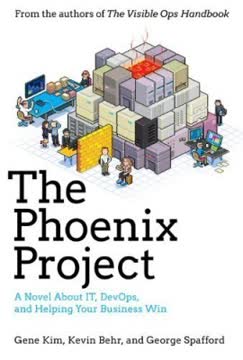Key Takeaways
1. Consulting is challenging: Navigate paradoxes and client resistance
The child who receives a hammer for Christmas will discover that everything needs pounding.
Embrace paradox. Consultants often face contradictions and must learn to be comfortable with ambiguity. They must balance being rational with being reasonable, and understand that clients may not always want what they say they want.
Manage resistance. Clients often resist change, even when they've hired a consultant to help implement it. Effective consultants learn to:
- Appreciate resistance as a natural part of the process
- Get resistance out in the open
- Name resistance in a neutral way
- Work with clients to discover the source of resistance
Apply the Buffalo Bridle principle. Remember that you can't force clients to change; instead, create conditions where they want to change:
- "You can make buffalo go anywhere, just so long as they want to go there."
- "You can keep buffalo out of anywhere, just so long as they don't want to go there."
2. Effective consultants see beyond the obvious and listen to the unspoken
Words are often useful, but it always pays to listen to the music (especially your own internal music).
Develop keen observation skills. Look for what's not there as well as what is. Pay attention to non-verbal cues, inconsistencies, and patterns that may reveal underlying issues.
Listen actively. Focus on:
- The content of what's being said
- The tone and emotion behind the words
- What's not being said
Use tools to uncover hidden information:
- The Orange Juice Test: Ask clients how they would handle a challenging but hypothetical situation
- The Rule of Three: If you can't think of three things that might go wrong with your plans, there's something wrong with your thinking
- The Incongruence Insight: When words and body language don't match, they point to a missing element
3. Amplify impact through small interventions and jiggling stuck systems
Less is more.
Understand the power of small changes. Sometimes, a tiny modification in the client's way of seeing the world can lead to significant improvements.
Act as a jiggler. Help "unstick" systems that have become too smooth and predictable:
- Introduce unpredictability in a non-threatening way
- Facilitate connections between different parts of the organization
- Ask questions that challenge assumptions
Follow the Law of the Jiggle:
- Make minimal interventions
- Allow the client's system to do most of the work
- Avoid becoming too closely associated with the organization's typical modes of thinking
4. Manage change carefully: Understand resistance and implement gradually
It may look like a crisis, but it's only the end of an illusion.
Recognize the nature of change. People often resist change because they're trying to preserve what they value most. Understand that what looks like a crisis may simply be the end of an illusion.
Implement change gradually. Follow these principles:
- The Edsel Edict: If you must have something new, take one, not two
- The Volkswagen Verity: If you can't refuse it, defuse it
- The Time Bomb: The surest way to waste time is to throw caution to the winds
Provide safeguards:
- Accept that failure is inevitable and plan for it
- Create backup systems
- Allow for practice runs and gradual implementation
5. Market for quality, not quantity: Build trust and set appropriate fees
Market for quality, not quantity.
Focus on building long-term relationships. Rather than constantly seeking new clients, prioritize delivering high-quality work to existing clients.
Apply the laws of marketing:
- A consultant can exist in one of two states: State I (idle) or State B (busy)
- The best way to get clients is to have clients
- Spend at least one day a week getting exposure
- Never let a single client have more than one-fourth of your business
- The best marketing tool is a satisfied client
Balance your time:
- Spend 25% on marketing and exposure
- Allocate 25% to "slack" time for personal development and unexpected opportunities
- Devote 50% to billable work
6. Price your services strategically: Consider value beyond monetary exchange
Pricing has many functions, only one of which is the exchange of money.
Understand the psychology of pricing. Remember that:
- The more they pay you, the more they love you
- The less they pay you, the less they respect you
Consider alternative forms of compensation:
- Professional development opportunities
- Access to specialized resources or information
- Networking opportunities
- Travel or cultural experiences
Apply the Principle of Least Regret: Set your price so you won't regret it either way – whether the client accepts or rejects your offer.
Remember: All prices are ultimately based on feelings, both yours and theirs. Consider not just the monetary value, but also how the price affects your relationship with the client and your own sense of worth.
7. Cultivate trust: The foundation of successful consulting relationships
Trust takes years to win, moments to lose.
Prioritize trustworthiness. Clients need to feel that you are reliable in both integrity and ability. Remember:
- Nobody but you cares about the reason you let another person down
- People don't tell you when they stop trusting you
Demonstrate reliability consistently:
- Keep commitments, no matter how small
- Communicate clearly and honestly
- Listen actively and ensure you understand client expectations
Rebuild trust when necessary:
- Acknowledge mistakes quickly and openly
- Take responsibility without making excuses
- Demonstrate through actions, not words, that you've learned and improved
Last updated:
FAQ
What's The Secrets of Consulting about?
- Consulting as Influence: The book defines consulting as "the art of influencing people at their request," focusing on helping clients solve problems they can't tackle alone.
- Understanding Irrationality: It delves into the irrational behaviors that often accompany requests for influence, offering strategies to navigate these challenges.
- Practical Advice: Provides practical techniques for consultants and clients to improve the consulting process and outcomes.
Why should I read The Secrets of Consulting?
- Broad Audience: It's not just for professional consultants; anyone who gives or receives advice can benefit from its principles.
- Insightful Techniques: Offers techniques and insights to enhance your ability to influence others positively and effectively.
- Engaging Style: Weinberg's humorous and engaging writing makes complex concepts accessible and applicable to real-life situations.
What are the key takeaways of The Secrets of Consulting?
- Understanding Problems: Emphasizes that there's always an underlying problem, even if not immediately apparent.
- People Problems: Highlights that interpersonal dynamics often drive consulting challenges, with the quote, "No matter how it looks at first, it's always a people problem."
- Consultant's Role: The consultant should guide clients without taking over, as success isn't about who gets the credit.
What are some specific methods or advice from The Secrets of Consulting?
- The Orange Juice Test: A method to gauge a service provider's honesty and capability by presenting a seemingly impossible request.
- Sherbie's Laws of Consulting: Includes insights like "Never forget they're paying you by the hour, not by the solution," emphasizing client expectation management.
- The Five-Minute Rule: Suggests that clients often reveal solutions in the first five minutes, encouraging consultants to listen carefully.
What are the best quotes from The Secrets of Consulting and what do they mean?
- "If you can't accept failure, you'll never succeed as a consultant.": Highlights the inevitability of failure and the importance of resilience.
- "What you don't know may not hurt you, but what you don't remember always does.": Stresses the importance of memory and awareness in consulting.
- "The thought that disaster is impossible often leads to an unthinkable disaster.": Warns against complacency and overconfidence, urging vigilance.
How does The Secrets of Consulting address the challenges of irrationality?
- Rationality vs. Irrationality: Discusses how consultants often face irrational behavior from clients, especially when seeking help.
- Becoming Rational About Irrationality: Advises recognizing patterns and employing strategies that account for emotional responses.
- Humor as a Tool: Uses humor to diffuse tension and create an open environment for addressing irrational behaviors.
What is the significance of the concept "Boulding's Backward Basis" in The Secrets of Consulting?
- Understanding History: Emphasizes that "Things are the way they are because they got that way," highlighting the importance of historical context.
- Learning from the Past: Encourages studying a client's history to identify patterns and avoid repeating mistakes.
- Guiding Problem-Solving: Helps consultants understand root causes and develop tailored solutions.
What is the "jiggler" role in consulting as described in The Secrets of Consulting?
- Facilitator of Change: A jiggler helps organizations get unstuck by introducing small, impactful changes.
- Subtle Influence: Works behind the scenes, allowing clients to feel in control while guiding them toward improvement.
- Problem Prevention: Addresses current issues and helps organizations develop the capacity to prevent future problems.
How does The Secrets of Consulting define effective communication in consulting?
- Active Listening: Involves understanding client needs and concerns fully, building trust and ensuring relevant advice.
- Clarity and Transparency: Stresses avoiding jargon and ensuring clients understand recommendations.
- Feedback Mechanisms: Advocates for feedback loops to foster open dialogue and continuous improvement.
What are the laws of trust outlined in The Secrets of Consulting?
- Years to Win, Moments to Lose: Trust is built over time but can be lost instantly due to a single misstep.
- Avoid All Tricks: Earn trust by being straightforward and honest, avoiding manipulative tactics.
- Never Promise Anything: Focus on delivering value without overcommitting to avoid disappointment.
How does The Secrets of Consulting suggest handling resistance from clients?
- Appreciate Resistance: Views resistance as valuable feedback that refines the consultant's approach.
- Get It Out in the Open: Advises direct communication to address resistance productively.
- Neutral Naming: Frames conversations in neutral terms to reduce defensiveness and focus on the process.
How can I apply the concepts from The Secrets of Consulting in my own consulting practice?
- Build Trust: Establish and maintain trust through consistent actions and open communication.
- Embrace the Jiggler Role: Look for small, impactful changes that lead to significant improvements.
- Continuous Learning: Commit to ongoing development by seeking feedback and enhancing consulting skills.
Review Summary
The Secrets of Consulting receives mostly positive reviews for its practical advice on consulting and life, delivered through humorous anecdotes and memorable "laws." Readers appreciate Weinberg's insights into human behavior and problem-solving, though some find the style challenging. The book is praised for its applicability beyond consulting, offering valuable lessons for various professional contexts. Critics note that some advice may seem obvious, and the anecdotal approach can make retaining specific points difficult. Overall, it's considered a classic text with enduring wisdom for consultants and non-consultants alike.
Similar Books





Download PDF
Download EPUB
.epub digital book format is ideal for reading ebooks on phones, tablets, and e-readers.






